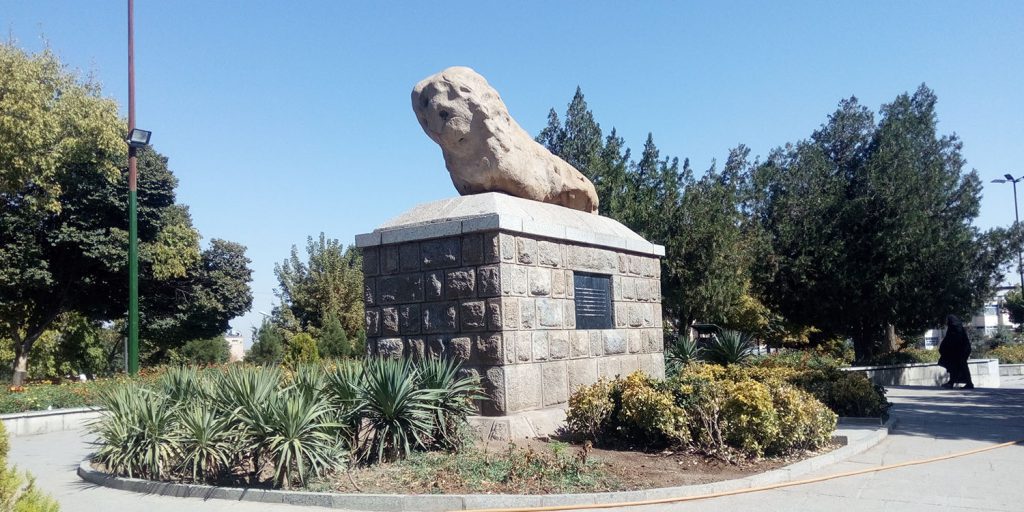
Menu

The Stone Lion Statue is one of the landmarks in the ancient history of the city of Hamedan, which stands 12 meters from Lion Stone Street and in the middle of a plaza of the same name.
The hill on which the stone lion statue now stands is an ancient hill, as a Parthian coffin was found there and is kept at the Hegmataneh Hill Museum.
This statue, along with its counterparts, was first located at the city gate of Hamadan, and the Arabs called it Baba al-Assad, meaning the Lion’s Gate, during the conquest of Hamadan.
In 931 AD, when the Dilmiens captured Hamedan, they completely destroyed the city gate. Mardavij Deilami wanted to transfer one of them to Rey, but when he failed he broke the claws of one of the lions and completely destroyed the other.

The damaged statue had fallen to the ground until 1941, when engineer Seyhoun, designer and architect of Bu Ali Sina’s tomb, placed it in its current location.
The date of construction of the stone lion statue is disputed. Some archaeologists and historians consider this statue to be a vestige of the middle civilization.
Main office: Office no. 5, First Floor,Building No. 404, Corner of Beheshti St. and Qaem Maqam St. Tehran Iran.
Tel : +985138519585 EXT. 117
WhatsApp : +968 912 14 982
Email : info@persiantoursgroup.com